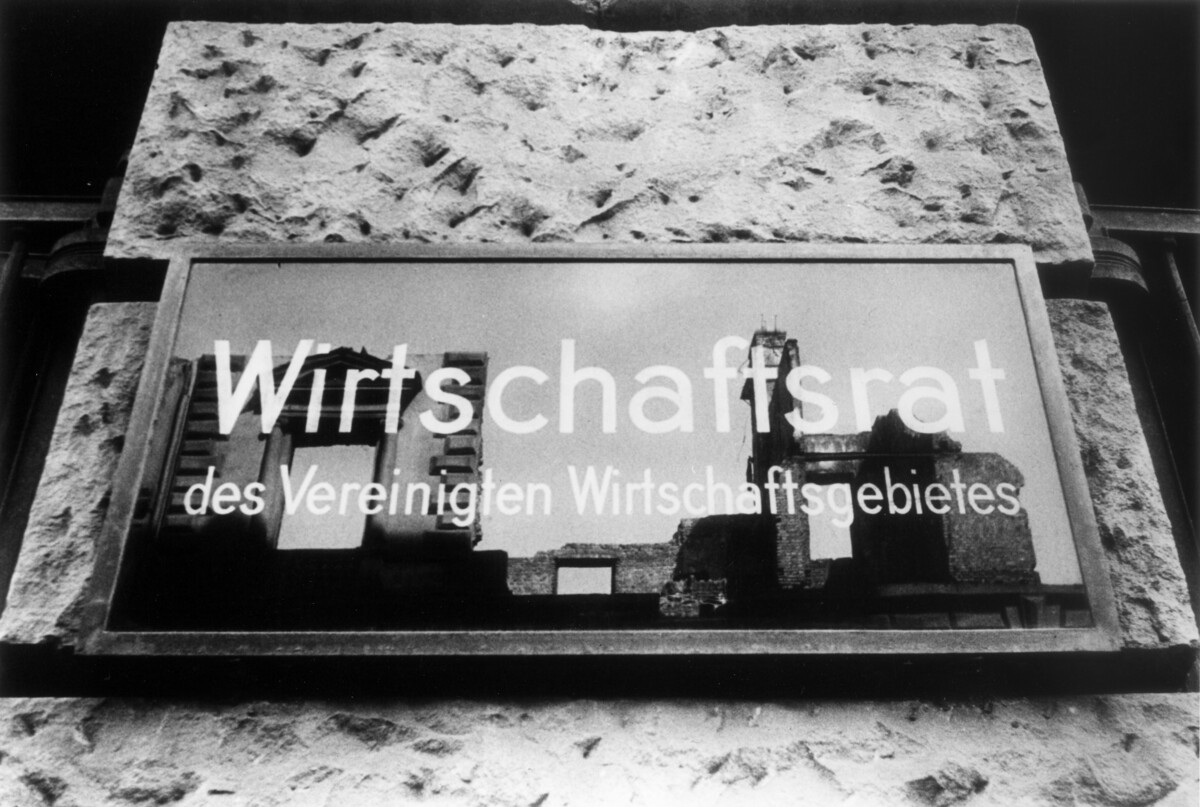Abstract
The Economic Council of the Bizone was established in Frankfurt am Main in May 1947. The creation of this body was a domestic policy decision with far-reaching implications for the two-state development of postwar Germany. It was, practically speaking, a quasi-parliament; it consisted of 52 members elected by the regional parliaments in accordance with proportional party representation. In addition, there was an Executive Council of regional governments, and a directorate made up of the leaders of administrative branches. Essentially, this structure already reflected the later constitutional organization of the Federal Republic, with a parliament, regional representation, and a government. In the photograph below, the ruins of the Frankfurt landscape are reflected in the Economic Council’s plaque – a very literal reflection of the difficult nature of its task (1949).
